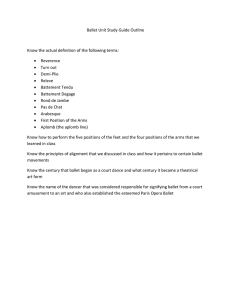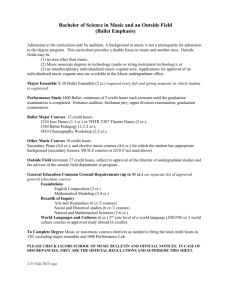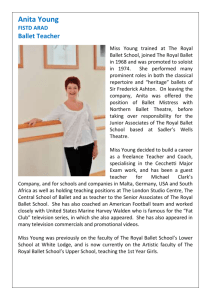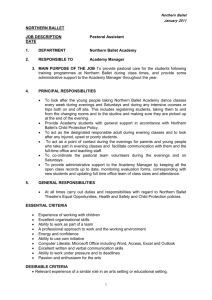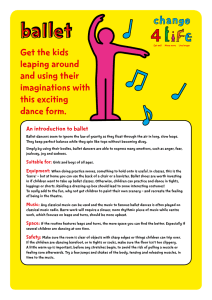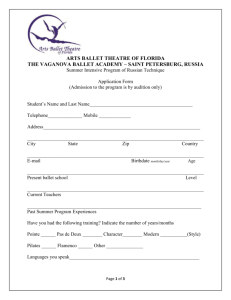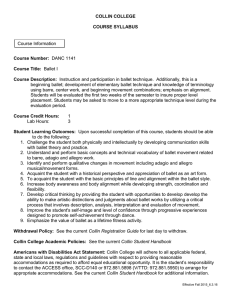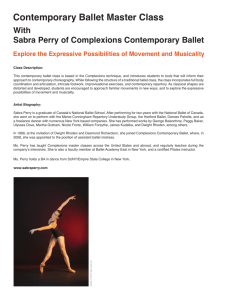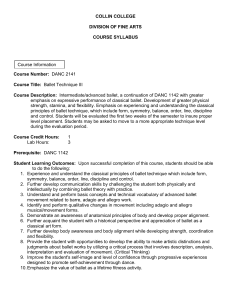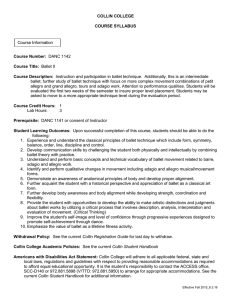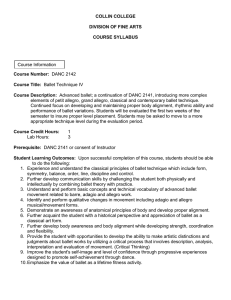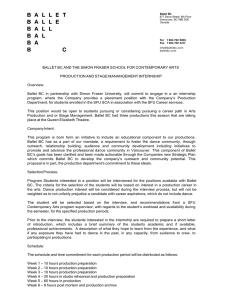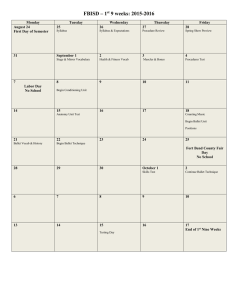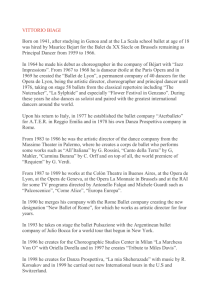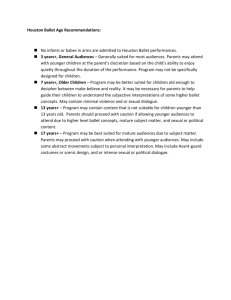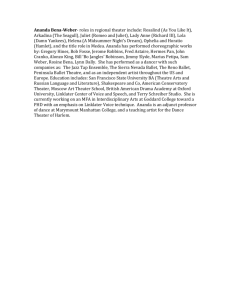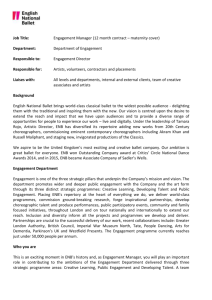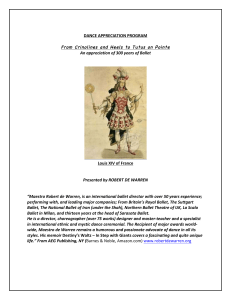The Bournonville Style
advertisement
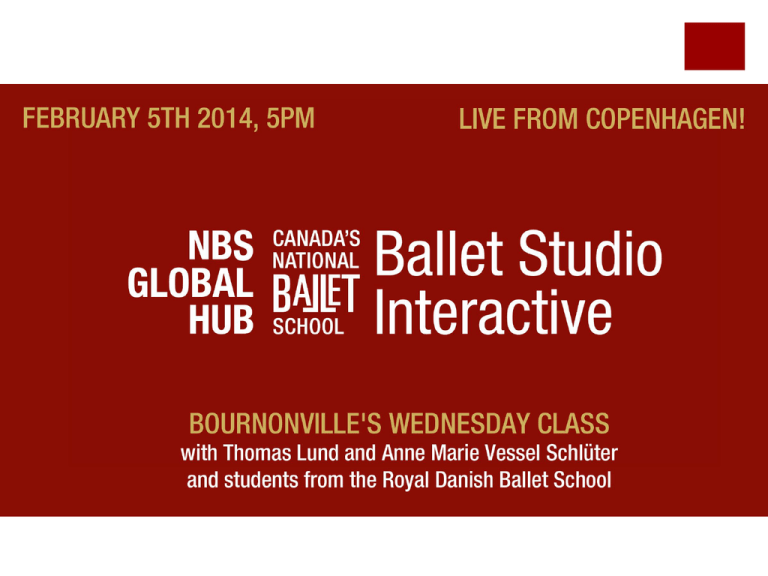
Auguste de Bournonville (1805-1879) Trained in Copenhagen and Paris Directed and choreographed for the Royal Danish Ballet Organized the school Wrote a syllabus in 1861, called Etudes Choreographiques] His style is considered the purest example of 19th century ballet technique Curriculum was based on set classes for each day of the week (Cecchetti) The Bournonville Style • Musicality and Joy of Movement are key elements of his ballets and style • Elegance of dancing conveyed through the extensive use of épaulement, rounded arms and use of head and eyes Bournonville’s Legacy • Students at the RDBS train in the Bournonville technique once a week • Today’s presentation draws from enchaînements seen in the Wednesday class • Pedagogues that codified the Bournonville school include: Hans Beck, Hans Brenaa, Harald Lander, Flemming Flindt, Frank Andersen, Fleming Ruyberg, Kirsten Ralov, Dinna Bjørn, Vivi Flindt, Eva Kloborg, Anne Marie Vessel Schlüter and Thomas Lund. Technique at a glance: Women • Elegance and grace • Soft rounded arms and specific port de bras (a l’ange, a la lyre, adorè) • Equality with jumping in beaten steps and jumps • Pirouettes were done sur le coup de pied and on demi pointe Technique at a glance: Men • Intricate footwork, petit allegro, batterie • No pas de deux in the traditional sense • Arms in bra bas for most exercises, requiring tremendous back and leg strength • Lightness and speed in tours en l’air and jumps Music for Class • Scores for the enchaînements in the ballet classes were collected and partly composed by Ludvig Smith • In 1943, Holger Nielsen transposed the original violin scores into a piano score Nicknames Many steps had nicknames, named after the dancers that either loved or hated an exercise (the dark step), the style of the step (Spanish, Chinese, etc) or the ability to leave the class after that step was completed (eg. The stepping out step)
